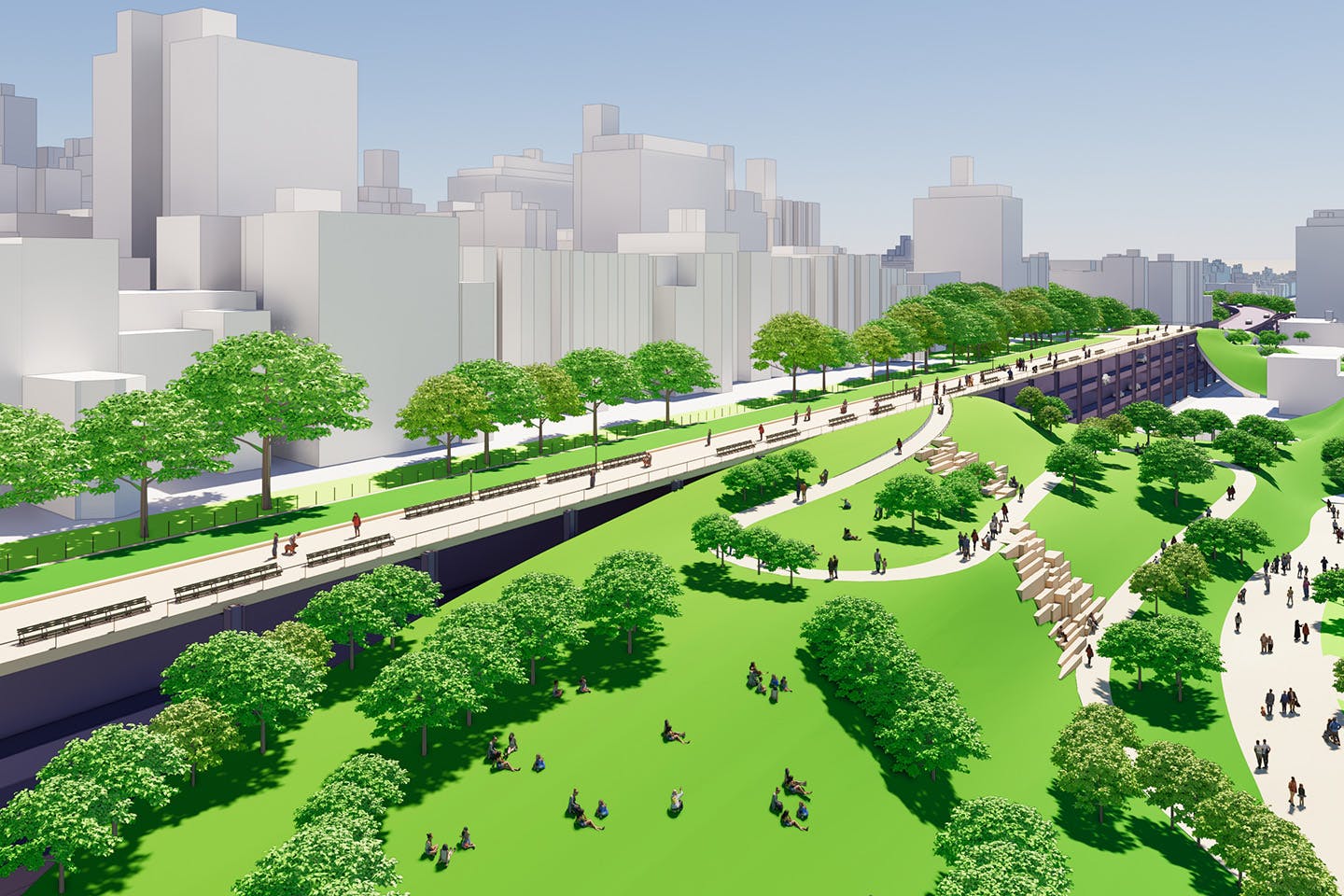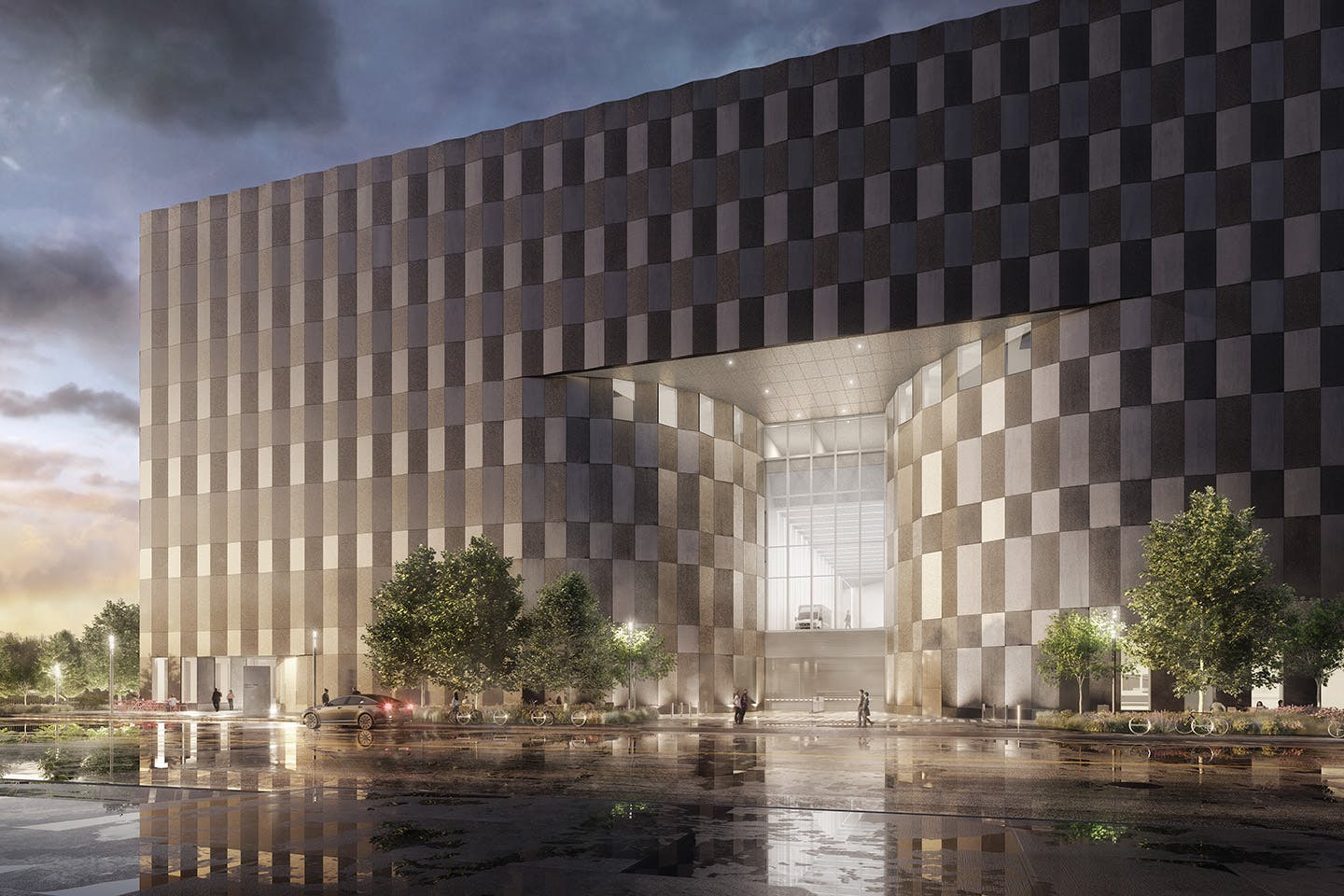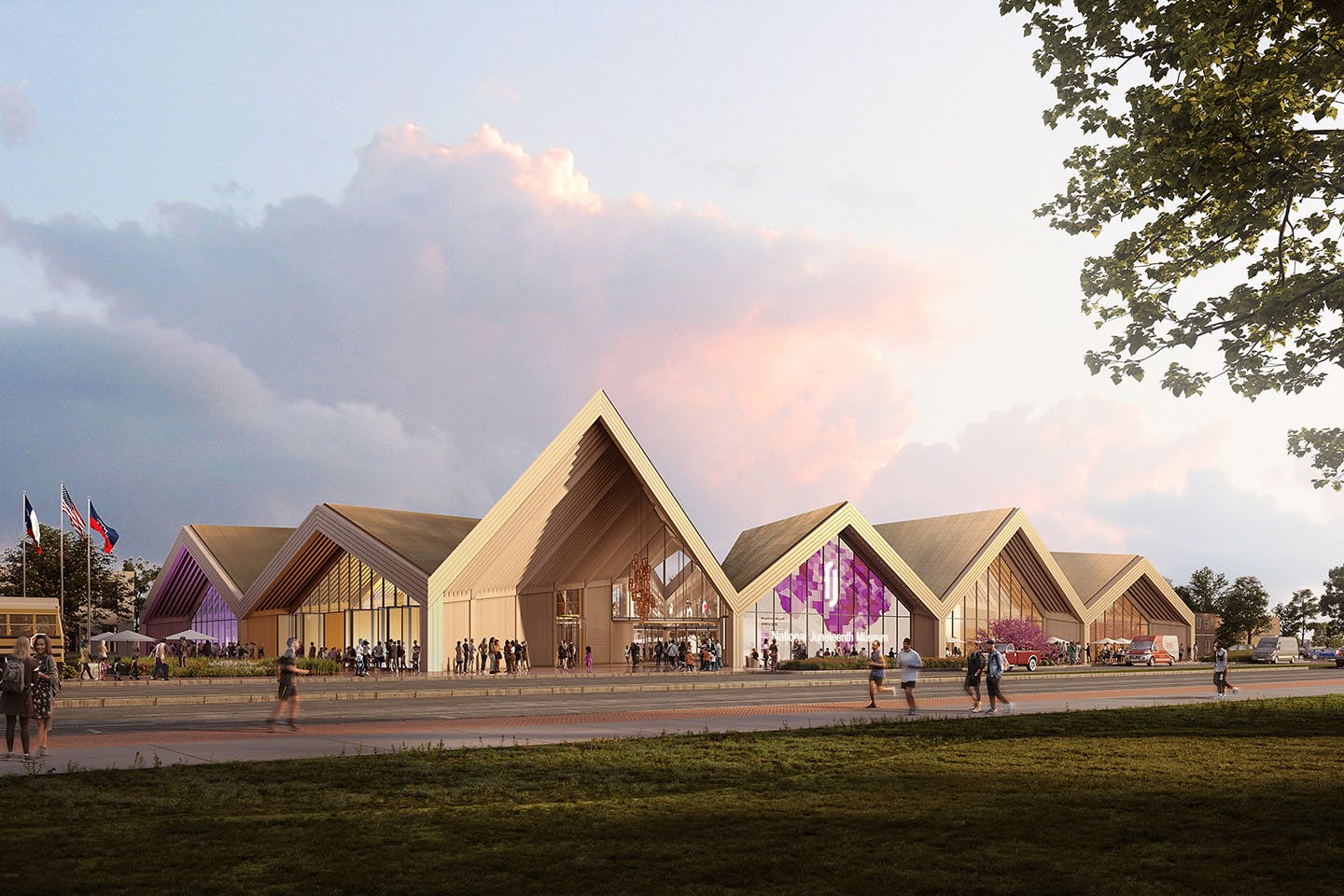Alvaro Velosa has always been fascinated by cities and urbanism. It’s one of the reasons he chose Parsons for his graduate studies—its interdisciplinary focus gave him the opportunity to combine the study of architecture with his passion for urban design.
For his thesis project, Velosa developed an affordable housing proposal consisting of prefabricated units situated on an abandoned elevated railway in Queens, New York. Inspired by Tokyo’s Nakagin Capsule Tower, the proposal’s use of modular construction
and repurposing existing infrastructure was designed to reduce building costs and increase efficiencies. The plan also included a bicycle path connecting to multiple nearby subway lines, increasing sustainable transportation options in the predominantly
car-centric area.
 Velosa’s redesign of the Brooklyn-Queens Expressway’s path through Brooklyn Heights.
Velosa’s redesign of the Brooklyn-Queens Expressway’s path through Brooklyn Heights.It was a class with visiting professor Bjarke Ingels that eventually led Velosa to his current role as an architect at Bjarke Ingels Group (BIG), where he continues to focus on urban design and its social and cultural impacts. Among his projects at BIG
was a reimagining of the Brooklyn-Queens Expressway that runs through Brooklyn Heights, including a public park space over the below-grade road to reduce noise, pollution and vibration for those living near the highway. Their design would also better
connect the Brooklyn Heights neighborhood to existing public parks and the East River waterfront. “We injected people-first ideas into the project,” explains Velosa, including community workshops to ensure that the views of local residents were incorporated
into their plans.
 A rendering of BIG’s design for Wildflower Studios, Robert De Niro’s film facility in Queens.
A rendering of BIG’s design for Wildflower Studios, Robert De Niro’s film facility in Queens.Merging architecture with thoughtful urban design is a central focus of another one of Velosa’s projects at BIG: Robert De Niro’s Wildflower Studios, which is currently under construction in Queens. Situated in an industrial area on the site of the Steinway
& Sons piano factory, the facility incorporates 11 state-of-the-art sound stages in an innovative stacked format, making it the world’s first vertical commercial studio. Velosa and his team worked with the community to address their needs in the plan,
which includes revitalizing the adjacent derelict Steinway Creek waterfront and creating a publicly accessible promenade. The studio will provide much-needed jobs to the area and further expands New York City’s bona fides as a television and film
production center, while breathing new life into an industrial corner of the borough.
Velosa credits his time at Parsons for laying the groundwork for his current success. He cites professors Andy Bernheimer, David Leven and Mark Gardner as particularly notable figures who helped shape his path there. “Parsons reinforced my interest in
urban design,” says Velosa. “Its energy was very inspiring.”
 BIG partnered with a local Black-owned architecture firm to design the National Juneteenth Museum in Fort Worth, Texas.
BIG partnered with a local Black-owned architecture firm to design the National Juneteenth Museum in Fort Worth, Texas.